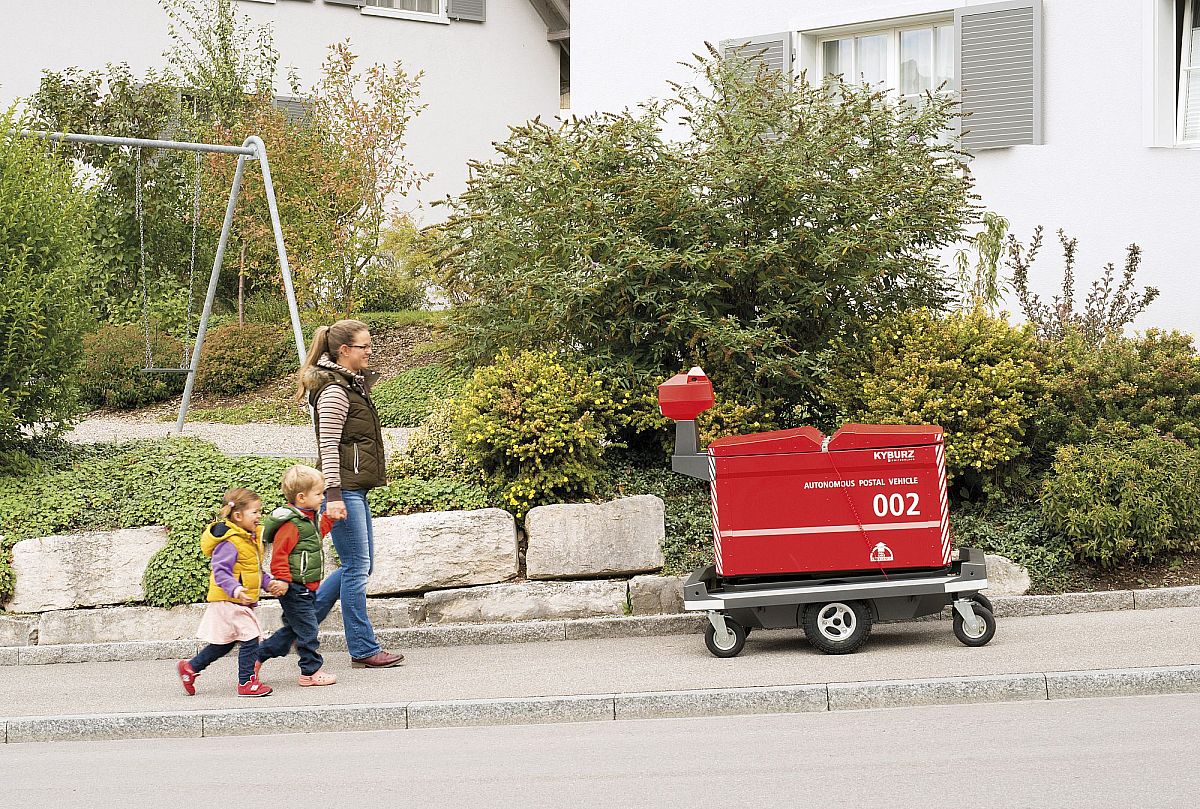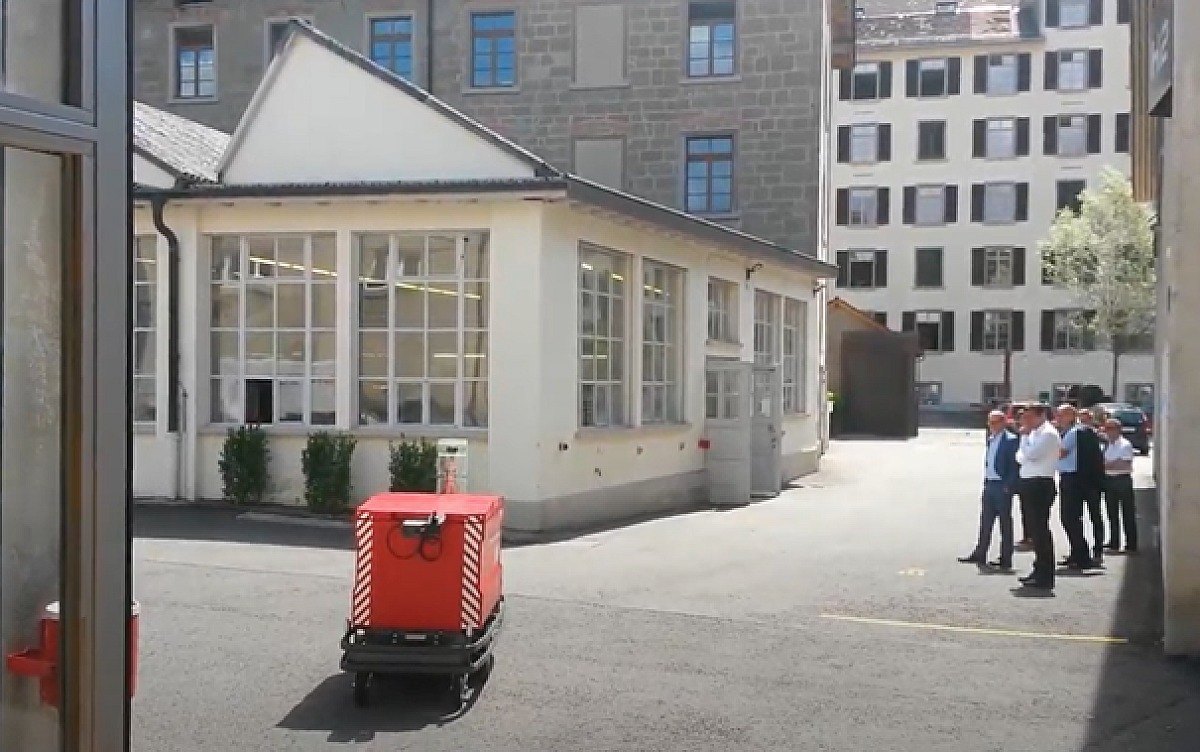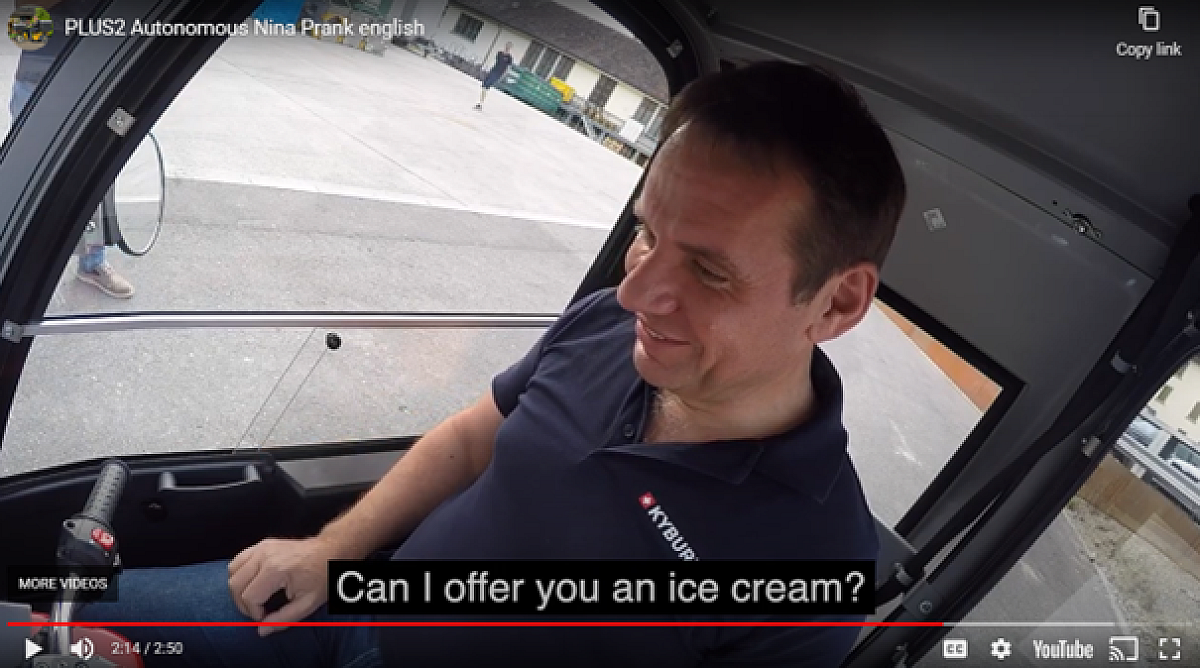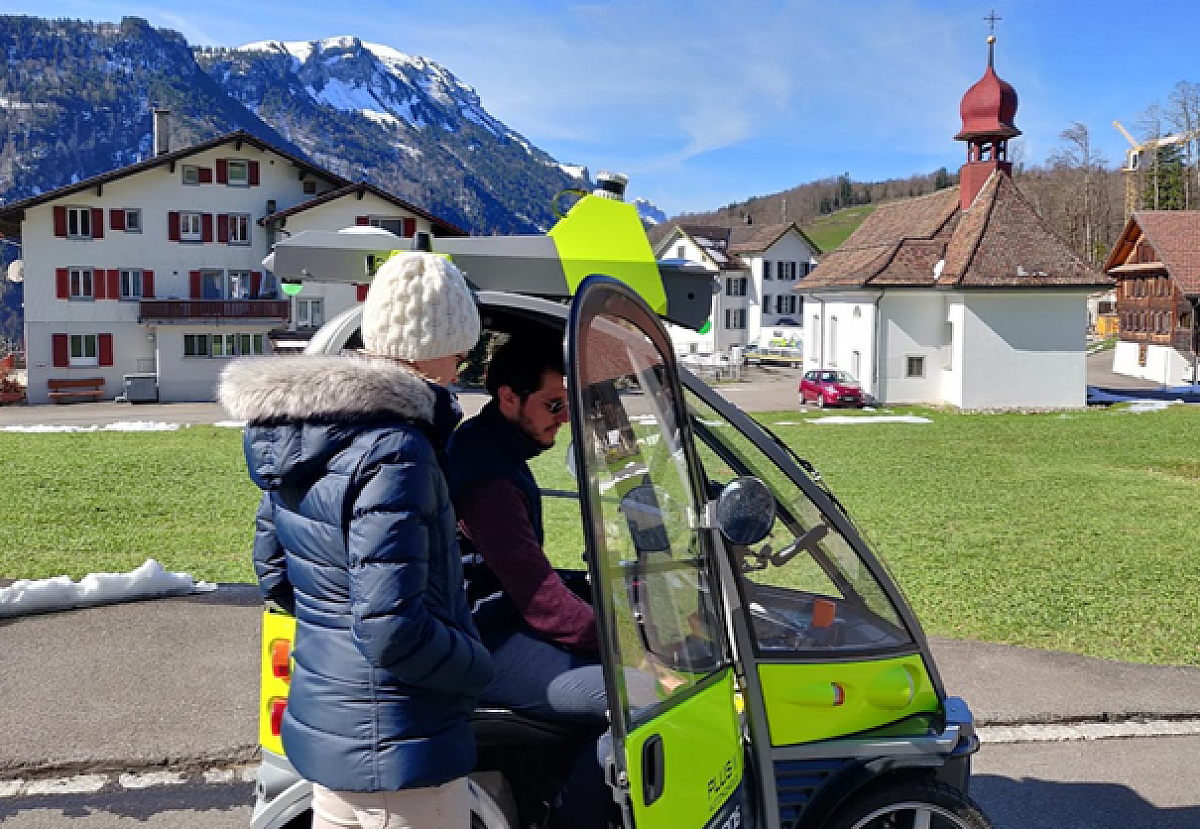Autonomous driving - a passion

Before I became self-employed, I worked in development at Rieter AG, which manufactures machines for processing cotton. I worked in the field of sensor technology. Our task was to test the sensors available on the market and to use them correctly in the machines we produced. So I dealt with light barriers, ultrasonic sensors, infrared sensors, capacitive sensors, colour measuring devices, vibration measuring devices and even camera systems.
An autonomous vehicle consists of a basic vehicle, sensors, a processor that processes all the signals and finally actuators that influence steering and speed.

We built the first semi-autonomous vehicle in 2003. We presented it at the Reha Care in Düsseldorf and let a blind person drive it. I have already reported on this. Although the presentation was successful, I was not satisfied with our performance. We had set the wrong expectations for the blind and were still far from being able to drive a vehicle on public roads completely without aids.
Many years later, Erik Wilhelm came to my company and he was as fascinated by the subject as I was. We founded the research department under his leadership and his core topic was and still is autonomous driving. We are both interested in how enough information can be collected with a sensor system and how everything can be processed to control a vehicle with it. Every year, Erik and his team build a vehicle for a specific application. The team learns and the vehicles get better and better. At the very beginning, Erik tried to drive with only one optical system consisting of two cameras. It worked quite well. Tesla is following this path. The big advantage is that camera systems are relatively cheap and only one source of information needs to be processed, which also simplifies the algorithm to a certain extent. The big disadvantage, however, is that in very strong light or in complete darkness, the camera systems collect too little information. So Erik continued to expand the arsenal of sensors for the other vehicles. A high-precision GPS system was added, which works well except inside buildings and in very narrow alleys. Then came laser measuring devices, which are brilliant - except in foggy conditions. There, the lasers constantly detect illusory objects - presumably ghosts - which the vehicle then tries to avoid. Infrared was added, best suited to detect warm objects, but not for objects that have the same temperature as the surroundings. Radar too has limitations. And finally ultrasound, but this is too slow in terms of detection because the speed of sound is only 333m/s and several measurements are necessary until an object is reliably detected. In the meantime, we have installed tens of thousands of sensor technology on each of our autonomous vehicles. Erik's goal is to have at least two different sensor systems available for each environment to provide sufficient safety for obstacle detection and localization. Processing all the signals is another issue. Erik wants to work with a machine-oriented programming language. This gives enough processing speed and also security, as machine-like programming is easier to check for processing errors. Erik uses the most powerful computers he can find and yet the speed of our vehicles will be limited to a maximum of 25 km/h. The limiting factor is the computing speed. In the future, however, computers will become faster and faster and that will give more possibilities.
Who actually needs the autonomous vehicles? What is the point of all this effort? Ordinary citizens certainly don't need them. We have a driving licence and can drive our cars ourselves, or we get into a taxi. Not only do we not have to worry about driving, we also have someone to support us, the taxi driver.
For me, autonomous vehicles will be important for my seniors in the future. I have experienced very impressively how I was able to give back a lot of freedom to the seniors who are no longer allowed to travel by car. They then want to enjoy this freedom for as long as possible, even if their sensory systems, vision, hearing or simply motor skills slow down. That's where autonomous or semi-autonomous vehicles bring direct added value.
I can also imagine that deliveries of goods to city centres or company premises will be easier in the future with autonomous vehicles. All the roads can be used at night by quiet, autonomous vehicles and in the morning the customer already has his delivery at his door. The next night, the van, which may have a maximum size of a Europallet, drives back to its starting point.
These are precisely the goals we are pursuing. In addition to the technology, the registration of the vehicles is of course a very time-consuming process. In Norway, our autonomous letter delivery robot at least received temporary road approval. The vehicle was in use for several months. Our goal, however, is to pave the way for regular approvals in Switzerland. That would give Switzerland a technological boost and increase its attractiveness as a research stronghold. I am a great advocate of solving difficult tasks together. For example, we are trying to organise an exchange between different research institutes and companies with the aim of mutually exchanging the latest findings and thus achieving our goals faster together than large organisations that invest a lot of money in this research.
Our vehicles already drive quite well, have a high degree of autonomy - which means: we have very few malfunctions, the vehicles rarely stop. The important thing now is to cover as many test kilometres as possible and share our experiences.
This year, we will build a vehicle for an industrial partner that will help them to autonomously transport goods from one place to another. The vehicle is to be put into operation at the end of the year. Initial tests have taken place. The future remains exciting.


I learned from it:
- Huge projects take a long time.
- It is necessary to be able to motivate oneself permanently.
- It's easier when you work together.
